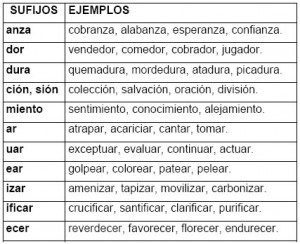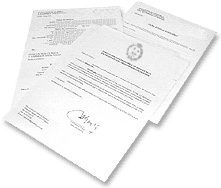 The numbers that we handle have a series of mathematical properties, which are studied in the section on number theory, popularly known as arithmetic. The first to use numbers were the Babylonians and the Sumerians, and later the Egyptians and the Greeks.
The numbers that we handle have a series of mathematical properties, which are studied in the section on number theory, popularly known as arithmetic. The first to use numbers were the Babylonians and the Sumerians, and later the Egyptians and the Greeks.
The numbers we use are known as real numbers, which are understood within the decimal system. If we wanted to represent them graphically, we could draw a line, in which the 0 would be in an intermediate position and to the left the real number -1, -2, -3 ... and to the right of the 0 the 1, 2, 3 ... The set of real numbers present a series of properties: the lock, the commutative, the associative and the distributive, which are fulfilled in some mathematical operations and not in others.
In the process of learning mathematics, schoolchildren must become familiar with a series of arithmetic operations. For the operations to be correct, it is necessary to know what properties the numbers have, that is, what can be done with them. For a child to be able to understand adequately the idea of the associative property of real numbers, it is necessary for him to previously familiarize himself with numbers through simple games, since the understanding of numbers and their rules is only reached at the stage of logical thinking. .
Brief explanation of the associative property
The associative property can refer to two operations, addition and multiplication. In the first case, if we have three real numbers, they can be combined or associated in different ways. Thus, (10 + 5) +15 = 10 + (5 + 15), in such a way that two different forms of association of the same numbers obtain an identical result. The associative property is equally applicable to multiplication, so (50x10) x 30 = 50 x (10X30). Ultimately, the associative property tells us that the result of an operation with three or more numbers is independent of the way the numbers are grouped.
In which operations the associative property is not satisfied
 We have seen that the associative property holds in addition and multiplication. However, not applicable to other operations. Thus, in the subtraction it is breached, since 2- (4-5) is not equal to (2-4) -5. Exactly the same thing happens with division.
We have seen that the associative property holds in addition and multiplication. However, not applicable to other operations. Thus, in the subtraction it is breached, since 2- (4-5) is not equal to (2-4) -5. Exactly the same thing happens with division.
A practical example of the associative property
Understanding this property can help us to solve daily operations. Let's think of an orchard in which a gardener has planted 3 lemon and 4 orange trees and later plants 2 other different trees. We can check that if we add (3 + 4) + 2 = 3+ (4 + 2). In conclusion, when we have to add or multiply, we must remember that it is possible to group the numbers in the way that suits us best.
Photos: iStock - Halfpoint / Antonino Miroballo









